The Principle Of The Common Heritage Of Mankind
₹99
 Loading...
Loading...
 Loading...
Loading...
Product Title : The Principle Of The Common Heritage Of Mankind
Uploaded On April, 2023
Download Now. Use It Forever.
The term ‘common heritage of mankind (CHM)’ has sought significant attention of states since the formation of modern international laws. Appearance of the term in various international treaties in vague manner & its varying interpretations by various states has serious connotations in managing international relations & on global governance, more particularly, in management of natural resources & territories which are beyond any state’s national jurisdiction. Example of such territories includes the Antarctica, outer space, the Moon, high seas, and deep seabed etc.
The principle of CHM holds that, some specific territorial areas belong to all humankind, they be reserved for peaceful purposes, their resources be available for everyone’s use and benefits, taking into account need of future generations, they be protected from any unilateral exploitation & be governed through common management. This article is focused at understanding the CHM principle & its attributes in detail yet easy to understand manner. Application of this principle in various international treaties such as the Antarctic treaty , The outer space treaty, The Moon agreement, UNCLOSE treaty on high seas & sea bed etc has been analysed in this article.
Through the systemic approach, the article seeks to answer some important questions that not only reveal the characteristics of CHM but also throws light on the relevance & employability of CHM in today’s complex environment of international relations. At the beginning, the introduction part of this article reveals answers to questions such as, what significant events occurred in the past & why there was a need felt to create CHM principle ?, Why the principle is so important & its significance in international relations? What is the scope of the term? Etc. Then, the next part is dedicated to understanding core concept of CHM. It unfolds the origin of the CHM, explains the term detail & then elaborates the nature & characteristics of its key elements which are essential part of the concept. Next, the article analyses use of CHM principle & its elements in international treaties namely, the Antarctic treaty, the outer space treaty, the Moon agreement, UNCLOSE treaty on high seas & sea bed etc. This section explains how some specific articles enshrined in these treaties, either applies CHM or implicate it indirectly. The applications of CHM in these treaties have been discussed in chart format. The chart format presentation is purely aimed at assisting readers to understand in simplest manner similarities & differences of usage of CHM principle and its elements in those treaties.
Then, the article discusses various disputes & criticism pertaining to CHM. The absence of standard definition has led states to interpret the concept in various ways & therefore the term has been often criticised for its vague nature & has become reason of disputes among many states. This section throws light on some key disputes among states related to its scope, features & applicability in international treaties. Lastly, the gist of the article is provided at the end with concluding remarks.
Content outline of this article is as follows:
- Introduction.
- Key Concept and its elements.
- Analysing use of CHM principle & its elements in various treaties (The Antarctic Treaty – 1959, The Outer Space Treaty -1967, The Moon Treaty – 1979, UNCLOS) -Part VII – High Seas -1982, UNCLOS Part XI – Seabed- 1982 & An implementation agreement to Part XI of UNCLOS 1994).
- Disputes & Criticism.
- Conclusion.
Instant Download. Available To Download In PDF Format.
*Brief Yet Well-Structured
*Precisely Analysed, Skilfully Summarised
*Easy To Understand & Quick To Read
Description
Product Title : The Principle Of The Common Heritage Of Mankind
Uploaded On April, 2023
Instant Download. Available To Download In PDF Format.
Available @ Lowest Price.
The term ‘common heritage of mankind (CHM)’ has sought significant attention of states since the formation of modern international laws. Appearance of the term in various international treaties in vague manner & its varying interpretations by various states has serious connotations in managing international relations & on global governance, more particularly, in management of natural resources & territories which are beyond any state’s national jurisdiction. Example of such territories includes the Antarctica, outer space, the Moon, high seas, and deep seabed etc.
The principle of CHM holds that, some specific territorial areas belong to all humankind, they be reserved for peaceful purposes, their resources be available for everyone’s use and benefits, taking into account need of future generations, they be protected from any unilateral exploitation & be governed through common management. This article is focused at understanding the CHM principle & its attributes in detail yet easy to understand manner. Application of this principle in various international treaties such as the Antarctic treaty , The outer space treaty, The Moon agreement, UNCLOSE treaty on high seas & sea bed etc has been analysed in this article.
Through the systemic approach, the article seeks to answer some important questions that not only reveal the characteristics of CHM but also throws light on the relevance & employability of CHM in today’s complex environment of international relations. At the beginning, the introduction part of this article reveals answers to questions such as, what significant events occurred in the past & why there was a need felt to create CHM principle ?, Why the principle is so important & its significance in international relations? What is the scope of the term? Etc. Then, the next part is dedicated to understanding core concept of CHM. It unfolds the origin of the CHM, explains the term detail & then elaborates nature & characteristics of its key elements which are essential part of the concept. Next, the article analyses use of CHM principle & its elements in international treaties namely, the Antarctic treaty, the outer space treaty, the Moon agreement, UNCLOSE treaty on high seas & sea bed etc. This section explains how some specific articles enshrined in these treaties, either applies CHM or implicate it indirectly. The applications of CHM in these treaties have been discussed in chart format. The chart format presentation is purely aimed at assisting readers to understand in simplest manner similarities & differences of usage of CHM principle and its elements in those treaties.
Then, the article discusses various disputes & criticism pertaining to CHM. The absence of standard definition has led states to interpret the concept in various ways & therefore the term has been often criticised for its vague nature & has become reason of disputes among many states. This section throws light on some key disputes among states related to its scope, features & applicability in international treaties. Lastly, the gist of the article is provided at the end with concluding remarks.
Content outline of this article is as follows:
- Introduction.
- Key Concept and its elements.
- Analysing use of CHM principle & its elements in various treaties (The Antarctic Treaty – 1959, The Outer Space Treaty -1967, The Moon Treaty – 1979, UNCLOS) -Part VII – High Seas -1982, UNCLOS Part XI – Seabed- 1982 & An implementation agreement to Part XI of UNCLOS 1994).
- Disputes & Criticism.
- Conclusion.
Download Now. Use It Forever.
*Brief Yet Well-Structured
*Precisely Analysed, Skilfully Summarised
*Easy To Understand & Quick To Read

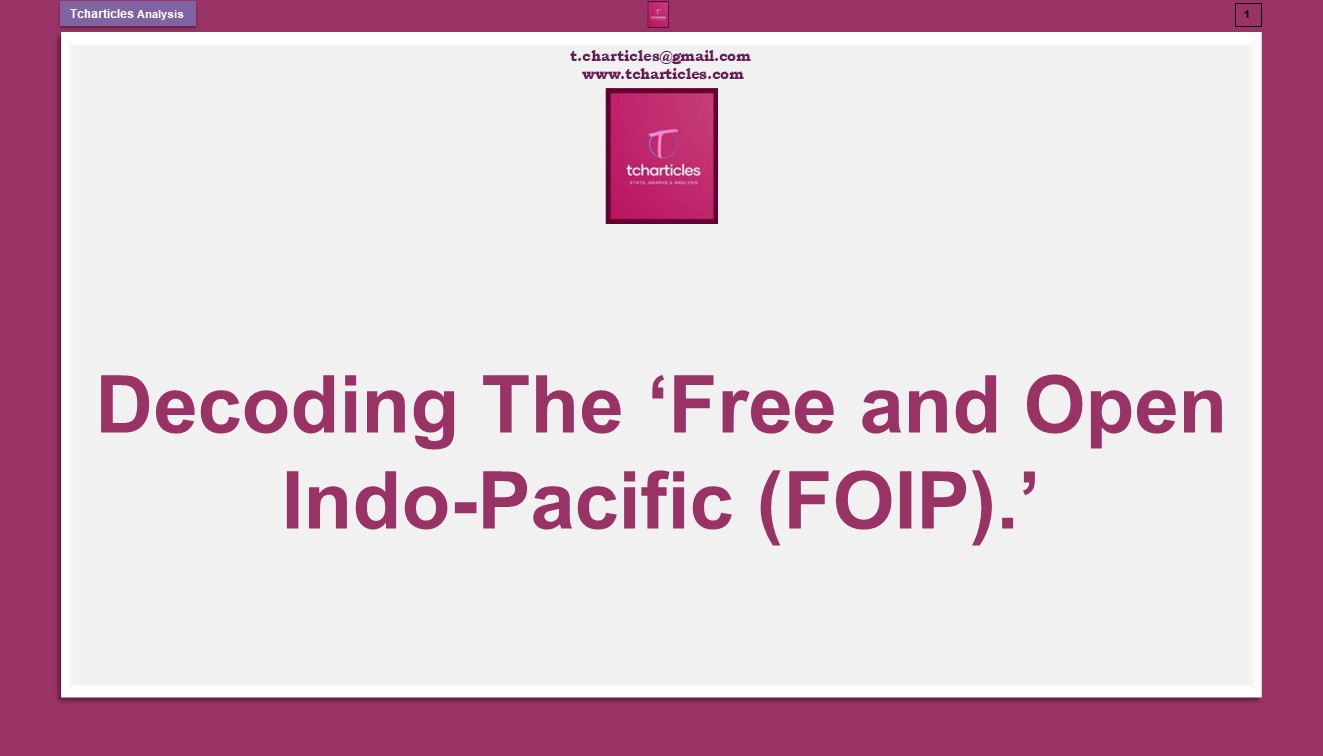
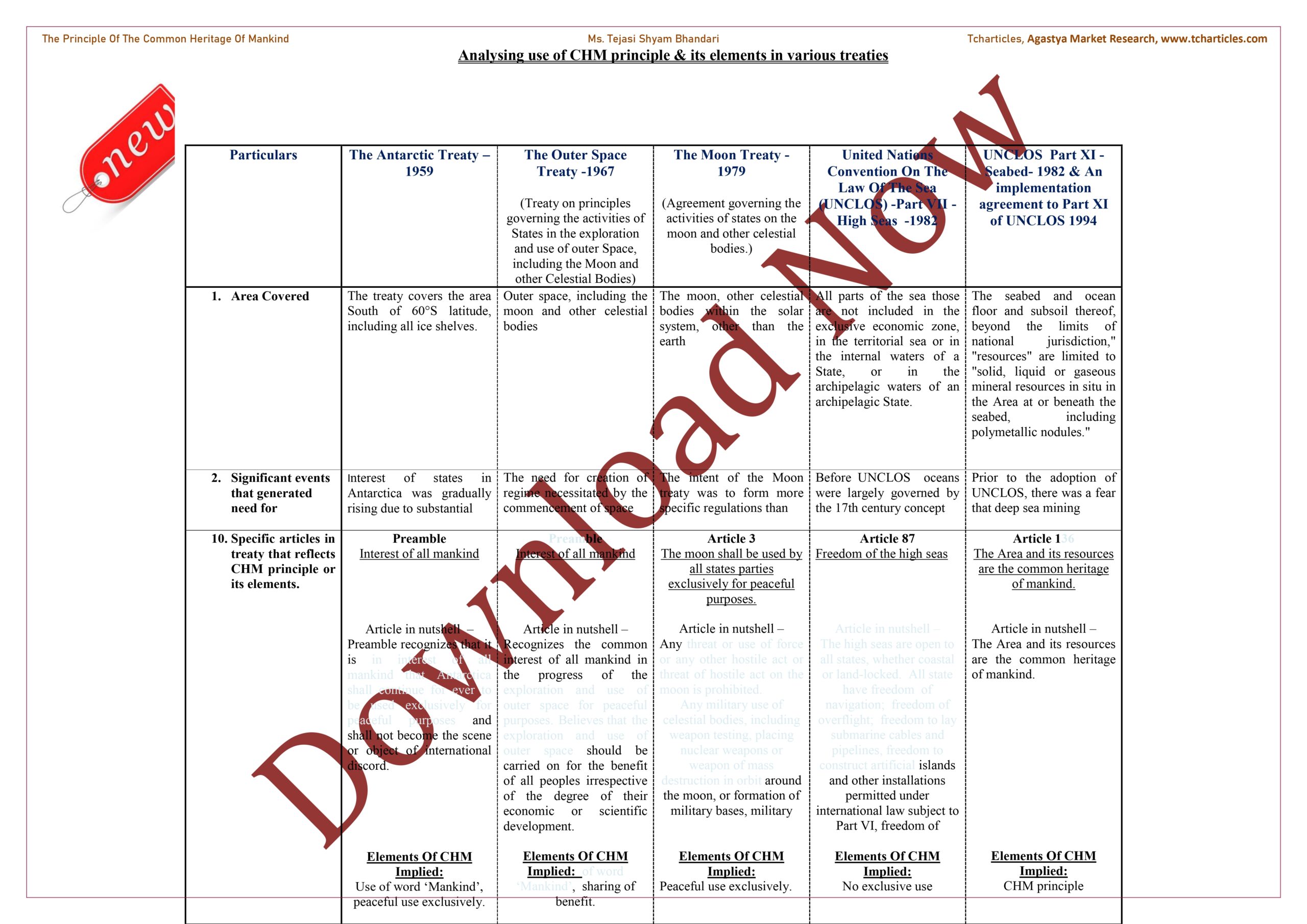
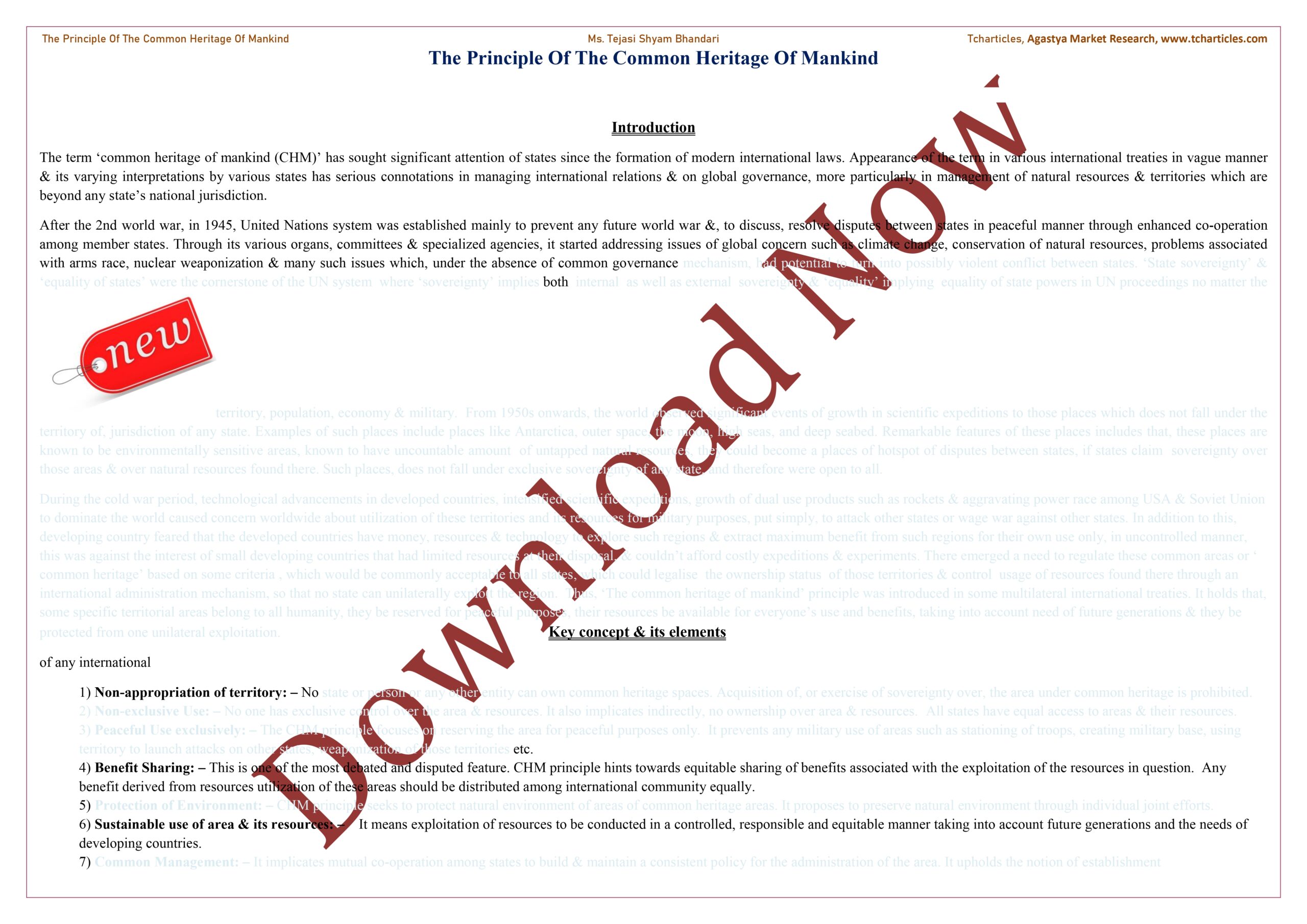
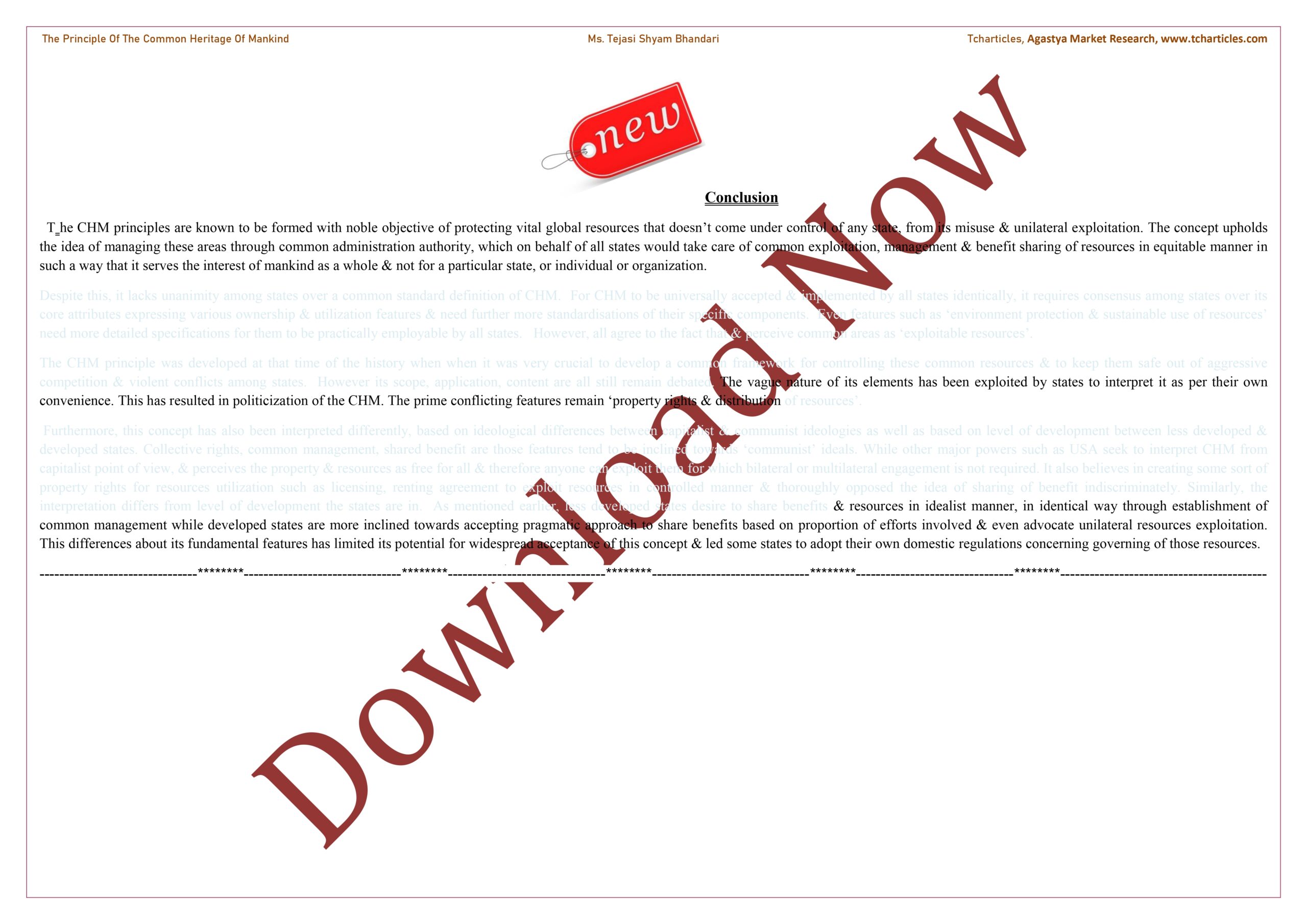
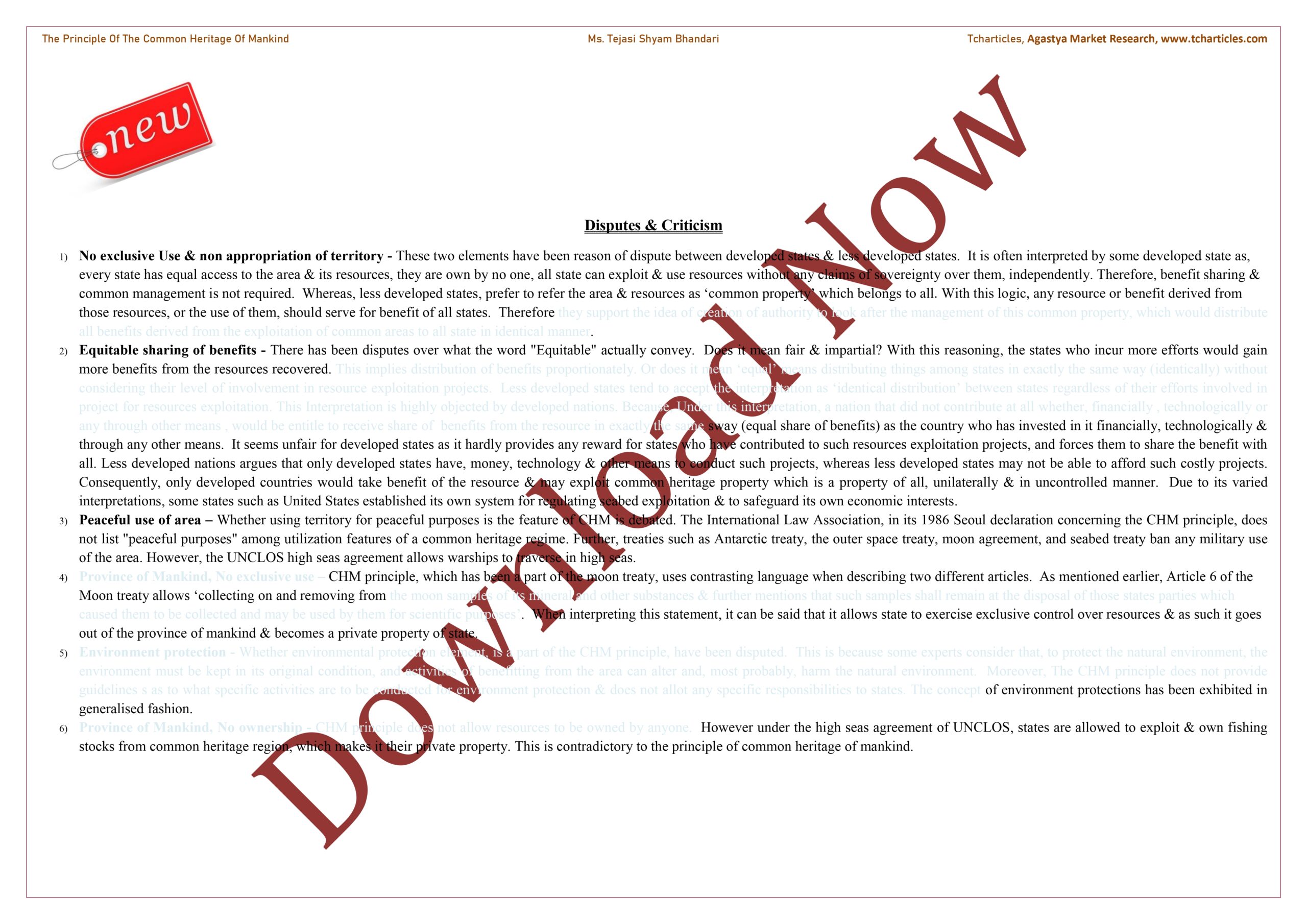
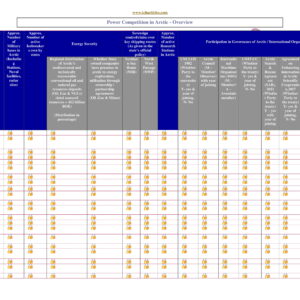





Rajesh Sharma –
I like your research article. I downloaded this one & it is good .
Suahana K R –
Good job, ! Well researched article
Nikhita –
This research explains international laws in table format 1 by 1 each article of international relations pertaining to commen heritage explained in breif seperately. I appreciate it.
Sarang –
Good research article
Abdul –
OK
Maitrayee –
I downloaded it yesterday, its a good article. Very few sites are there where such articles focused on political science are available.